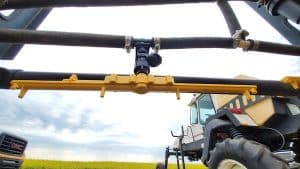Five questions on in-crop nitrogen top dressing – with a “Right Source at the Right Rate, Right Time and Right Place” theme.

An in-season top-up of nitrogen fertilizer can make sense for a few reasons. For example, if growers cut back on rates with the dry start to the season, recent rains may have increased crop yield potential and its need for nitrogen. If the crop won't have enough, a top-up can make good economic sense.
